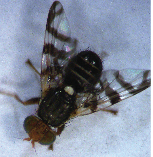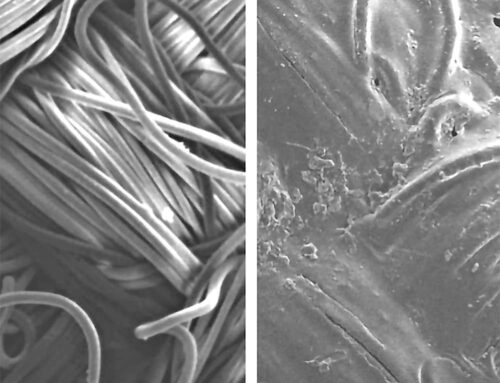 Michigan tart cherry growers are being urged to apply one more insecticide spray—after harvest is over. The reason is, cherry fruit flies are surviving in the small amount of fruit left on the trees after they’re shaken during harvest. This allows them to maintain their populations and be there for the crop coming the next year.
Michigan tart cherry growers are being urged to apply one more insecticide spray—after harvest is over. The reason is, cherry fruit flies are surviving in the small amount of fruit left on the trees after they’re shaken during harvest. This allows them to maintain their populations and be there for the crop coming the next year.
“We’re finding much of the cherry fruit fly activity is taking place after harvest,” said Dr. Larry Gut, Michigan State University Extension entomologist. He spoke to growers during the Northwest Michigan Horticulture Show near Traverse City in January.
One application of Provado (imidacloprid), within seven days after harvest, can clean up the orchard and reduce fruit fly pressure the next season. “Add it to your post-harvest spray for cherry leaf spot,” he suggested. Tart cherry growers are finding they need to spray more after harvest than they once did.
They need to keep healthy leaves on the trees longer to assure tree health and fruit quality in future years, so they now spray more times postharvest with fungicides to reduce the effects of cherry leaf spot. Now, insecticides join the tank mix. Gut and his team of entomologists have studied the cherry fruit fly for several years and found that there are several distinct populations—and the different populations are being selected for genetically by the spray programs growers use.
Cherry fruit flies that infect the later-maturing wild black cherries are not an issue for growers, Gut said. The flies that infest wild cherries are a separate population that mate and lay eggs later in the summer after tart cherries are harvested and gone from the orchards. Growers had suspected that wild hosts were providing a source of pest pressure, but Gut found that not to be the case.
The introduction of new reduced-risk insecticides and the move away from azinphos-methyl has released the selection pressure “because they are not as effective, not as residual,” Gut said. This has resulted in a shift in cherry fruit fly population toward those that emerge three to four weeks earlier, “a shift toward those that emerge before harvest.” To avoid residues, growers need to quit spraying as harvest nears.
“You want residues to be gone at harvest, but you need to come back immediately after harvest and spray if your traps show cherry fruit flies,” he said. When trees are shaken for harvest, some cherries remain on the trees—especially high up on more willowy wood.
That’s exactly where cherry fruit flies like to be, Gut said. In years of excess supply of tart cherries, and last year was such a year, some growers leave fruit unharvested to reduce supply under the federal market order governing tart cherries. “Diverted cherries—any cherries left in the orchard on the trees—provide a potential food source,” Gut said. The most important cherry fruit flies to control are those laying eggs near or soon after harvest, as they will be the ones that emerge at harvest time in future years, he said.




Leave A Comment